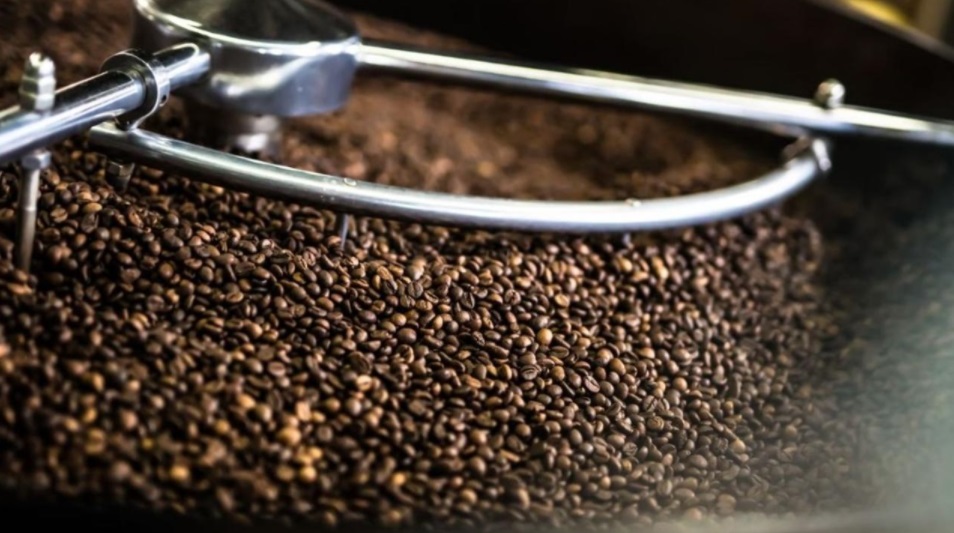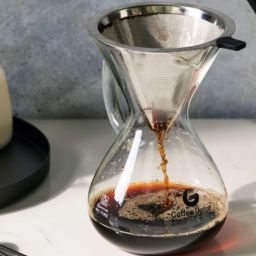
Coffee roasting transforms green, somewhat grassy-smelling coffee beans into the aromatic beans we love for brewing. This process isn’t just about heating beans; it’s a dynamic art that blends tradition and science. As the beans roast, they go through remarkable physical and chemical changes, releasing the rich aromas and flavors that define your morning cup.
Roasting coffee is a relatively quick process, but the exact time can vary significantly depending on your goals. Light roasts might only need 5-10 minutes, perfect for those who appreciate a milder flavor profile. For a deeper, richer taste, a medium roast typically takes 10-15 minutes. If you prefer an even bolder cup, dark roasts extend up to 20 minutes or more. Each stage has its own unique characteristics and appeals to different palates.
Key Takeaways for Roasting Coffee
- Temperature’s Role: The roasting temperature is crucial as it determines the depth of the roast—from light to dark. Higher temperatures lead to darker roasts.
- Cracking Sounds: Listening for the ‘first crack’ can help you judge when the beans have reached a light roast. A ‘second crack’ indicates a move towards darker roasts. These sounds are key milestones in the roasting process.
- Essential Equipment: At home, you can use various tools for roasting, from specialized coffee roasters to simpler methods like a popcorn popper or even a baking sheet in your oven.
Detailed Roasting Techniques
Stovetop Method
1. Equipment Needed: A heavy, thick-bottomed skillet or pan.
2. Heat: Set your stovetop to a medium-high setting.
3. Bean Movement: Continuously stir the beans to ensure even roasting and prevent burning.
4. First Crack: Listen for this sound which indicates a light roast has been achieved.
5. Cooling: Once desired roast is reached, transfer beans to a metal colander to cool and stop the roasting process.
Oven Roasting
1. Preparation: Preheat your oven to 500 degrees Fahrenheit.
2. Setup: Spread a single layer of green coffee beans on a baking sheet.
3. Roasting: Place the tray in the oven and stir every minute or two to promote even roasting.
4. Monitoring: Watch for color changes and listen for the ‘first crack.’
5. Cooling: Remove beans from oven and cool in a colander or cooling tray.
Popcorn Popper Method
1. Equipment Setup: Use a popcorn popper that allows for continuous movement of the beans.
2. Heating: Preheat the popper and add green coffee beans.
3. Stirring: Ensure the beans are moving continuously for even roasting.
4. First and Second Cracks: These are key indicators to watch for to achieve desired roast level.
5. Cooling: Transfer the beans to a colander to cool and halt the roasting.
Maillard Reaction
The Maillard reaction is a chemical interaction between amino acids and reducing sugars that occurs when coffee beans are roasted. This reaction contributes to the flavor complexity and color depth in the coffee. It’s similar to what happens when toasting bread or grilling meat.
Caramelization
Following the Maillard reaction, caramelization starts as the temperatures climb higher, further enhancing the beans’ sweetness and complexity. This process releases additional flavors that are critical to the full-bodied taste of the coffee.
From Green to Brown: Visual and Aromatic Cues
When roasting coffee, both visual and aromatic cues are essential indicators of how the roast is developing. Initially, green coffee beans start off with a grassy smell and gradually, as they warm, they emit a toast-like aroma. Visually, beans begin as green, then transition to yellow and a golden brown, and finally reach varying shades of brown depending on the desired roast level.
Light Roast: Beans are a light brown color with no oil on the surface. The aroma is milder and more grain-like.
Medium Roast: A richer, darker brown with some oils beginning to show. The scent is more balanced, with notes of sweetness.
Dark Roast: Dark brown, shiny with oil. The aroma is potent, often with a smoky or chocolaty quality.
FAQs
How do I choose the right temperature for different roast levels?
Selecting the right temperature for roasting coffee is crucial for achieving the desired roast level. Generally, light roasts are done at temperatures between 350°F to 400°F, medium roasts from 400°F to 430°F, and dark roasts above 430°F up to 480°F. It’s important to monitor the beans closely as higher temperatures can accelerate the roasting process, potentially leading to burnt beans if not careful.
What are the first and second cracks?
The first and second cracks are key milestones in the coffee roasting process, signaling different stages of development. The first crack occurs when beans expand and make a cracking sound, typically indicating a light roast. This happens due to moisture and carbon dioxide breaking down the bean structure. The second crack is louder and quicker, often associated with a medium to dark roast, characterized by the bean’s oils surfacing and a more intense cracking sound.
How long should the beans cool before grinding?
After roasting, it’s essential to cool the beans quickly to stop the roasting process. Beans should be cooled for at least 4 to 8 minutes in a cool, dry place. They should be spread out in a single layer to cool uniformly. Waiting for at least 12 to 24 hours before grinding allows the beans to develop their full flavor profile, as they release carbon dioxide and stabilize in flavor.
Can I roast coffee beans in a regular oven?
Yes, you can roast coffee beans in a regular oven, though it might not provide as much control or consistency as specialized equipment. Spread the beans in a single layer on a baking sheet and roast at a preheated temperature of around 450°F. Regularly shake the pan or stir the beans to promote even roasting.
Is there a way to determine the roast level without a thermometer?
While using a thermometer is recommended for precision, you can gauge the roast level by observing the beans’ color and listening for the cracks. Light roasts typically have a light brown color and no oil on the surface, medium roasts are darker with some oil, and dark roasts are shiny and dark with significant oil. Listening for the first and second cracks can also guide you in determining the roast level.
Final Thoughts
Roasting coffee is both an art and a science that can profoundly impact the flavor of your brew. The time it takes to roast coffee can vary greatly, typically ranging from 5 to 30 minutes depending on the roast level desired and the roasting method used. Whether you prefer a light, medium, or dark roast, understanding and controlling the temperature and time is crucial for achieving consistent results. The journey from green to brown beans involves numerous chemical changes, including the Maillard reaction and caramelization, which are essential for developing the coffee’s rich flavors and aromas.
Home roasters are encouraged to experiment with different roasting profiles and methods, such as using a popcorn popper, oven, or even a stove top. By doing so, you not only tailor the coffee to your personal taste but also gain a deeper appreciation for the nuances of coffee roasting.









